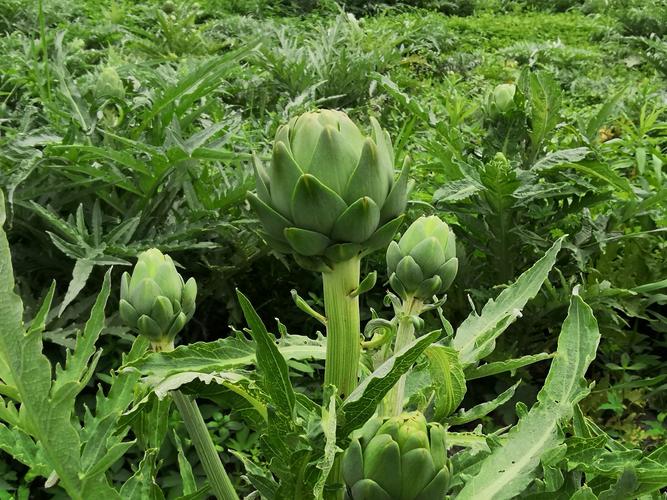A Comprehensive Guide to Growing Artichokes in Colorado
I. IntroductionThe spring frosts and short growing season is a test of patience. Here's a definitive guide to cultivating artichokes successfully in the Centennial State. II. Preparing Your Garden1. Choosing the Perfect LocationArtichokes are native to the Mediterranean regions. They thrive in the full sun with well-draining soil. You can use some strategies to increase drainage and sunlight. For example, terracing or mounding. 2. Soil PreparationMake sure the soil is slightly acidic to neutral pH (6-7). Organic matter can improve the structure and nutrient content. For example, compost and well-rotted manure. 3. Tips for Raised Bed and Container GardeningGiven Colorado's slope-heavy terrain, raised beds offer the advantage of easier drainage control and early season warming. Incorporating a blend of sandy loam soil or a cactus mix can optimize growing conditions even further. For container gardening, select larger plastic plant pots and monitor moisture levels diligently. They can fluctuate more than in-ground setups. Both options also provide a measure of protection against sudden frosts. This can occur especially in higher elevations in the state.  III. How to Grow Artichokes in Colorado?1. Best Times to Plant Artichokes in ColoradoGrowing artichokes in Colorado after the last frost but before the heat of summer sets in. This is typically between April and early June for most areas. 2. Guide to Planting Artichoke Seeds or SeedlingsDirect sow seeds ¼ inch deep in fertile soil when growing artichokes in Colorado. For seedlings, dig a hole slightly larger than the rootball. Plant at the same depth as they were in the 15 gallon pot. Then, mix in some slow-release fertilizer. 3. Spacing and Planting DepthArtichokes can spread up to 6 feet in diameter. I recommended a minimum of 3 feet between plants. Try to keep the crown (top of the rootball) slightly above the soil level to prevent rot. 4. Mulching and WateringGood water management is key to cultivating robust artichokes. A layer of mulch can retain moisture and regulate soil temperature. For example, straw or wood chips. In the arid Colorado environment, consistent watering is crucial. But be careful not to overwater. Artichokes dislike "wet feet". Keep the soil moist, but not waterlogged. IV. Artichoke Care1. Fertilization TipsSynthetic fertilizers can overwhelm the relatively lean soils common in the state. So organic is often the way to go. Composted chicken manure and balanced organic fertilizers do the trick. They have slow release and soil-building properties. This provides nutrients without sacrificing the artichoke's unique flavor. 2. Watering SchedulesConserving water is part and parcel of Colorado living, and your artichokes need to be on board. Avoid extremes and practice deep, infrequent watering. Mulch around the plants helps retain moisture and keep the roots cool. 3. Keeping Pests and DiseasesColorado's elevation is not just a hurdle for humans; it deters some pests, such as the artichoke moth. However, others like aphids and caterpillars may still damage your plants. Plant attractants like dill and fennel among your artichokes to encourage beneficial insects. When it comes to diseases, proper spacing and watering practices can often be the first line of defense against common fungal issues. 4. Companion PlantingLavender, mint and rosemary have more in common than a shared role in your cooking – they're excellent companions for artichokes, deterring pests and enriching the soil. A good companion can also offer shade or the opposite. Sunlight through the crucial stages of the artichoke's growth, helping to manage soil conditions effectively. VI. Harvesting and Enjoying1. When and How to HarvestArtichokes are ready for harvest when their buds are tight and before they start to open. Look for a variety of signs, including a tight, firm feel, consistent coloring, and a round, plump shape. A cut with a sharp knife about an inch below the bud's base is the proper technique. 2. Delicious RecipesOnce harvested, artichokes can be enjoyed fresh within a few days, or preserved by blanching and freezing for later use. An immersed lemon-water bath also keeps cut artichokes' discoloration at bay.
|
«
Return to OFBiz
|
1 view|%1 views
| Free forum by Nabble | Edit this page |

